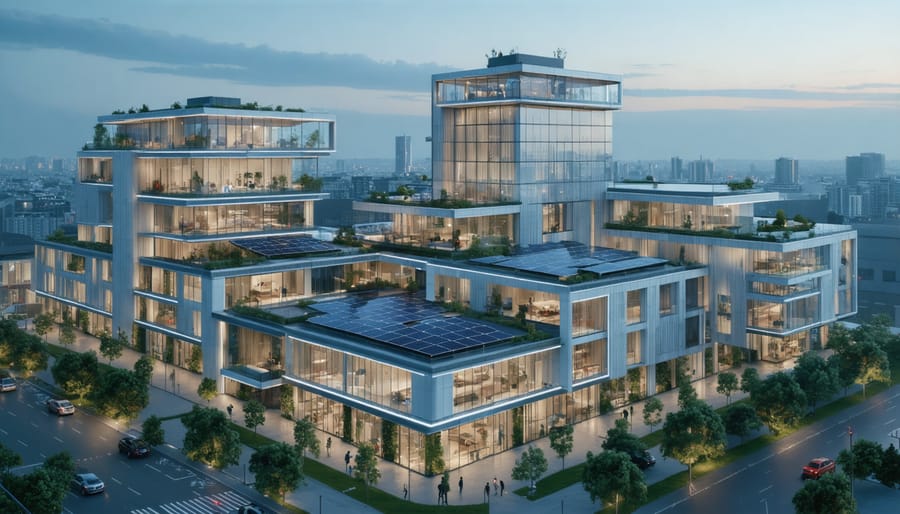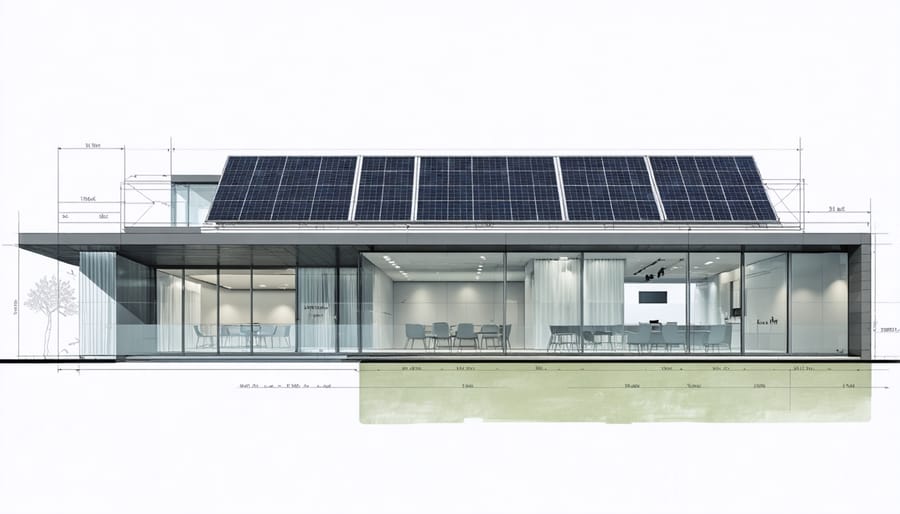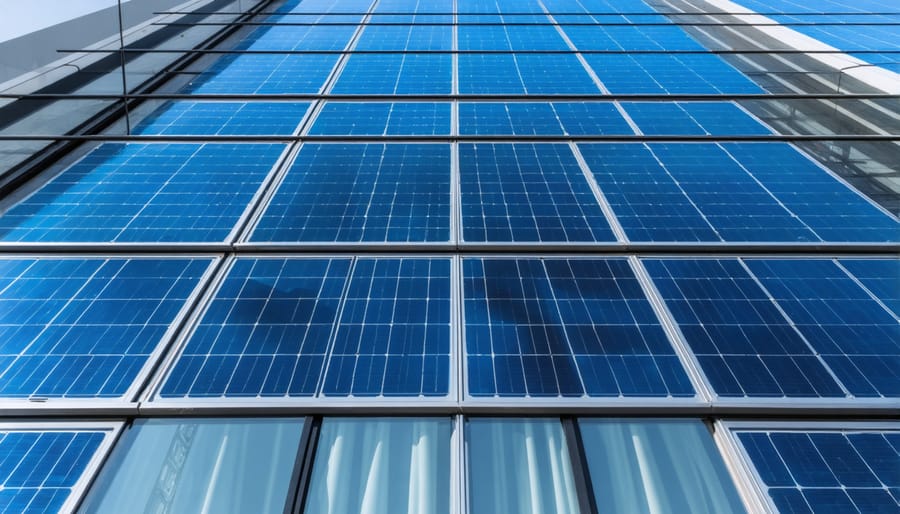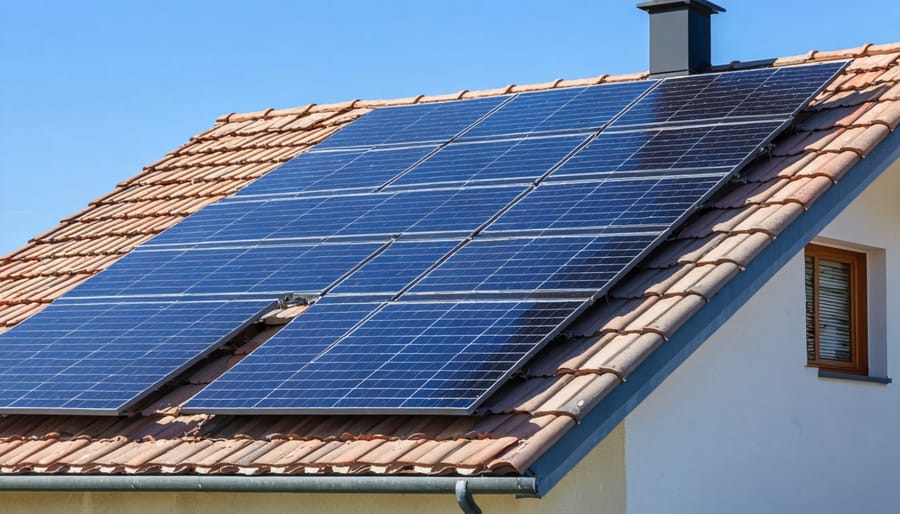These Building-Integrated Solar Solutions Are Transforming European Architecture

Transform modern buildings into energy-generating assets through integrated solar applications – a revolutionary approach that seamlessly merges photovoltaic technology with everyday construction materials. From solar roof tiles that preserve architectural aesthetics to transparent solar windows harvesting energy without compromising natural light, these innovations are reshaping Europe’s urban landscape. Today’s integrated solar solutions deliver dual functionality: serving as both building components and clean energy generators, enabling structures to meet strict EU energy efficiency standards while reducing operational costs.
Building owners across Europe are discovering how integrated solar applications extend beyond traditional panel installations, incorporating solar elements into facades, balconies, and even decorative elements. This evolution in building-integrated photovoltaics (BIPV) represents a crucial step toward achieving carbon-neutral architecture, offering a sophisticated blend of sustainability and modern design that’s reshaping how we think about urban development.
Solar Integration: Beyond Traditional Panels

The Evolution of Building-Integrated Photovoltaics
Building-integrated photovoltaics (BIPV) has transformed significantly since its inception in the 1970s. What began as simple solar panels attached to buildings has evolved into sophisticated architectural elements that seamlessly blend form and function. The early 2000s marked a turning point with the introduction of solar tiles and semi-transparent photovoltaic glazing, opening new possibilities for architects and builders across Europe.
Recent years have witnessed remarkable advances in breakthrough solar technologies, particularly in efficiency and aesthetics. Modern BIPV solutions now include color-customizable panels, solar glass that maintains transparency while generating power, and ultra-thin photovoltaic films that can be integrated into various building materials.
The European market has been particularly instrumental in driving BIPV innovation, with countries like Germany and Switzerland leading the way in developing solutions that meet both aesthetic and performance requirements. Today’s BIPV systems not only generate clean energy but also serve as weather protection, thermal insulation, and architectural features, marking a significant advancement from their purely functional origins.
Revolutionary Building Materials with Built-in Solar
Solar Roof Tiles and Shingles
Solar roof tiles and shingles represent a sophisticated evolution in building-integrated photovoltaics, offering homeowners an aesthetically pleasing alternative to traditional solar panels. These innovative products seamlessly blend into existing roof designs while generating clean energy. Unlike conventional solar installations, these tiles replace standard roofing materials entirely, serving both as weather protection and power generators.
Modern solar tiles are engineered with advanced photovoltaic cells that achieve impressive efficiency rates, typically converting 15-20% of solar energy into electricity. Their modular design allows for smart home integration and flexible installation patterns, making them suitable for various architectural styles common across Europe.
Recent technological improvements have enhanced durability and weather resistance, with manufacturers now offering warranties comparable to traditional roofing materials. While the initial investment may be higher than conventional solutions, these integrated systems often deliver superior long-term value through reduced energy costs and increased property value.
Solar Glass and Windows
Solar glass and windows represent a groundbreaking advancement in building-integrated photovoltaics, offering a seamless blend of functionality and energy generation. These innovative solutions incorporate ultra-thin solar cells between glass layers, allowing natural light to pass through while capturing solar energy. Transparency levels can range from 20% to 70%, depending on specific requirements and applications.
European manufacturers have developed sophisticated products that maintain excellent thermal insulation properties while generating clean energy. These solutions are particularly popular in commercial buildings, where large glass facades can be transformed into power-generating surfaces without compromising architectural aesthetics.
Recent technological improvements have enhanced energy conversion efficiency while reducing costs, making solar windows increasingly viable for both new construction and retrofitting projects. Modern installations can generate between 50-150 watts per square metre, depending on transparency levels and location. The technology is especially effective in urban environments where traditional solar panel space may be limited, offering building owners a dual-purpose solution for natural lighting and sustainable energy generation.

Solar Facades and Cladding
Solar façades and cladding represent an innovative approach to building-integrated photovoltaics, transforming vertical surfaces into power-generating assets. These systems seamlessly combine aesthetic architectural elements with renewable energy production, making them particularly valuable in urban environments where roof space may be limited.
Modern solar façade solutions offer various integration options, from semi-transparent glass panels ideal for office buildings to opaque cladding systems suitable for industrial facilities. These systems can be installed as ventilated façades, curtain walls, or decorative elements, providing both energy generation and thermal insulation benefits.
In European cities, where building preservation often meets sustainability requirements, solar cladding systems offer flexibility in design and appearance. Available in different colours and textures, these solutions can complement existing architecture while contributing to energy efficiency goals. Some advanced systems even incorporate bifacial solar cells, which can capture reflected light from surrounding buildings, maximizing energy yield in urban settings.
The technology’s dual functionality as both building envelope and power generator makes it an increasingly popular choice for new construction and renovation projects across Europe.
Benefits for European Property Owners
Energy Efficiency and Cost Savings
Integrated solar applications deliver significant energy efficiency benefits that translate into substantial cost savings for property owners. Studies across European markets show that buildings with integrated solar solutions typically reduce their energy consumption by 30-60%, depending on the installation scale and local climate conditions. These systems effectively lower dependency on grid electricity, resulting in immediate reductions in monthly utility bills.
The financial advantages extend beyond direct energy savings. Many European countries offer attractive incentives, including tax rebates and feed-in tariffs, for buildings incorporating solar technologies. Property owners can expect a return on investment within 5-8 years, while the systems continue to generate savings for 25+ years. The integration of solar applications also enhances property value, with market studies indicating a 4-6% increase in property valuation.
Moreover, modern solar solutions feature smart monitoring systems that optimize energy consumption patterns, leading to additional efficiency gains and cost reductions through improved energy management.
Aesthetic Integration and Property Value
Modern integrated solar solutions have revolutionized the architectural landscape, seamlessly blending sustainability with style. Unlike traditional solar panels, building-integrated photovoltaics (BIPV) serve as functional building elements while generating clean energy. This dual-purpose approach often enhances property aesthetics through sleek designs and innovative materials.
Studies across European markets demonstrate that properties with integrated solar applications typically command a premium of 3-8% over comparable non-solar properties. This value increase stems from both energy cost savings and growing market appreciation for sustainable architecture. In countries like Germany and Switzerland, solar-integrated buildings have become prestigious symbols of environmental consciousness and technological advancement.
Architects and developers now have access to diverse solar integration options, from solar tiles that mimic traditional roofing to transparent solar glazing for windows. These solutions maintain architectural integrity while future-proofing properties against rising energy costs. Real estate professionals increasingly highlight integrated solar features as key selling points, particularly in luxury and commercial property segments where sustainability meets sophistication.
The aesthetic success of solar integration often depends on early-stage planning and collaboration between architects, solar specialists, and property developers to ensure optimal visual and functional outcomes.
Implementation and Support
Planning and Installation Process
The successful implementation of integrated solar applications begins with a thorough site assessment and feasibility study. Professional contractors evaluate factors such as building orientation, roof condition, shading patterns, and local regulations. This initial phase typically takes 2-4 weeks, ensuring optimal system design and compliance with European building codes.
Following assessment, detailed system design incorporates client requirements, energy consumption patterns, and architectural considerations. Engineers create comprehensive plans, including electrical schematics and structural calculations, while securing necessary permits from local authorities.
Installation proceeds in clear stages: First, structural preparations ensure the building can support the integrated system. Next, weatherproofing and mounting systems are installed, followed by the solar components themselves. Electrical integration includes inverter installation, wiring, and connection to the building’s power system.
Quality control checks occur throughout the process, with final testing and commissioning typically taking 1-2 days. The entire implementation timeline usually spans 8-12 weeks, depending on project scope and complexity. Post-installation support includes system monitoring setup, user training, and documentation handover, ensuring optimal performance from day one.

Maintenance and Long-term Performance
Maintaining integrated solar applications requires regular but manageable attention to ensure optimal performance over their extensive lifespan. Most systems are designed to operate efficiently for 20-25 years, with proper care extending their functionality even further. Annual professional inspections are recommended to check electrical connections, mounting systems, and overall performance metrics.
Regular cleaning is essential, particularly in regions with high dust or pollution levels. In most European climates, natural rainfall often provides adequate cleaning, though bi-annual professional cleaning can optimise energy generation. Modern monitoring systems allow real-time performance tracking, enabling quick identification and resolution of potential issues.
The durability of today’s integrated solar solutions is impressive, with most quality systems withstanding severe weather conditions common across Europe. Components are typically tested for resistance to wind, snow loads, and temperature variations. Maintenance costs remain relatively low, averaging about 1-2% of the initial system cost annually, making it a cost-effective long-term investment in sustainable energy.
To maximise system longevity, working with certified maintenance providers and following manufacturer guidelines is crucial. Many European installers offer comprehensive maintenance packages, ensuring consistent system performance throughout its operational life.
The integration of solar applications into modern buildings represents a pivotal shift in how we approach sustainable architecture and energy management. As Europe continues to lead the way in renewable energy adoption, property owners have unprecedented opportunities to transform their buildings into energy-efficient, future-ready spaces. These integrated solutions not only enhance property values but also contribute significantly to our collective environmental goals.
The versatility of modern solar applications, from building-integrated photovoltaics to solar thermal systems, offers tailored solutions for every property type. By embracing these technologies today, property owners can position themselves at the forefront of sustainable building practices while enjoying substantial long-term cost benefits and energy independence.
The time to act is now. With increasing government incentives, improving technology, and growing installation expertise across Europe, there has never been a better moment to invest in integrated solar solutions. We encourage property owners to take the first step by consulting with qualified solar integration specialists who can assess their specific needs and develop customized implementation plans. By making this investment today, you’re not just upgrading your property – you’re contributing to a more sustainable future for generations to come.
Leave a Reply